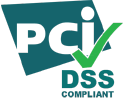If your certification program is enjoying success, you’ve likely done a great job communicating value to your candidates. And value is all about perception, after all. In this article we will cover how to manage the marketing message of your credentialing program and five marketing channels for your credentialing program.
Your candidates perceive that your certification confers unique benefits that satisfy their core desires for validation, enhanced self-esteem, recognition, advancement and more.
On the other hand, if your certification is struggling…does the value you promise square with the value prospects perceive?
If not, it might be time to paint a different picture or tell a better story about your program.
You’re the architect of your certification’s user experience.

In a 2016 article for Certification Magazine, author and certification expert Peter Manijak tallied the following implicit and explicit messages that a certification may be communicating to its target market:
- Not being an elite program, when your competitors are, sends a message.
- Putting out a poor-quality certification exam sends a message.
- Not promoting your own certification sends a message.
- Not having a visible and easily accessible registry of existing certificants on your web site sends a message
- Burying the certification-program page on your company web site sends a message.
- Not having certification leadership speak publicly about the program sends a message.
- Not requiring channel partners to be certified sends a message.
Engagement sends one message to the target market. Silence sends another.
Credentialing sponsors are developing a brand and a reputation whether they intend to or not. Better that the certification message be intentional rather than accidental.
Managing the message of your credentialing program
As mentioned in a previous post, you’ll eventually have two audiences for your program: certificants and prospects. They’re your existing and future customers. Both need to be reminded (repeatedly!) about the value your certification offers and the results it delivers. Both groups need motivation to sign up or renew.
Here are five marketing channels for your credentialing program:

Social Media: Platforms like Facebook, Twitter and LinkedIn are perfect for interacting with your target audience. Additionally, prospects and certificants can share your content, which amounts to both free advertising and an implied endorsement.
Targeted Email: In the digital world, your prospect’s inbox is precious real estate. Email is a personal conversation without the distractions and interruptions of social media. Your prospects’ email behavior can also be tracked via open rates and link clicks. These can identify the subject lines and topics that resonate with your audience. Use this data to craft better, more effective email messages.
Advertising: Print advertising in a trade publication or professional journal can be targeted and economical. Subscribers demonstrate above-average interest, engagement and commitment to a field. They’re primed to receive messages and offers about professional development like credentialing.
Live Events: National trade and professional association meetings are high-visibility events, perfect for interacting with your target audience. Organizing or sponsoring a live event or exhibiting at or speaking at industry conferences sends a message of leadership and authority to your audience. Webinars are ideal events—flexible and affordable—for reaching large online audiences, potentially international audience, interested in your credentialing program.
Publicity: Advertising costs money. Publicity is free. Publishing the names of your new certificants (with their permission, of course) on social media, in newsletters or on your web site is a great way of recognizing their achievements and highlighting the benefits of your program.
If you’ve done a recent job analysis for your credentialing program, create an article on your findings and submit it to an industry journal. Get attention and establish your own authority by submitting your findings for consideration as a presentation at an industry conference.
Any endorsement of your program by a major employer, university or other organization should be publicized. Likewise, historic milestones like certifying your 1,000th certificant or launching a brand new certification program are newsworthy and media-worthy events.
Lastly, digital badging services like Accredible or Credly, automate the announcement of new certificants on social media. This offers immediate recognition of their achievements and allows whole new audiences of potentially like-minded people to discover your credentialing program.
Final words…
Your certification offers value when it delivers the outcome your target audience is seeking. Surveys allow your audience to tell you in their own words what they want or expect from certification.
Use those very words when crafting the message(s) of your credentialing program. They will resonate because you’ll be speaking to their core desires and emotions in their own language.








